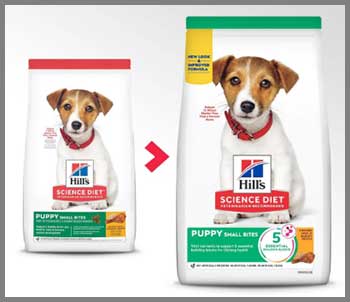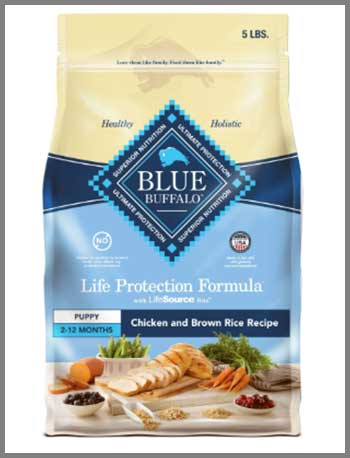As a dog parent, I’ve spent countless hours agonizing over what to feed my furry friend. With so many brands vying for my attention, two names consistently stand out: Hill’s Science Diet and Blue Buffalo. My goal here is to compare these heavyweights, weighing their pros and cons to help you make an informed choice for your pup. From ingredients to pricing, I’ll share my insights with a conversational, analytical lens, ensuring you walk away with clarity on which brand suits your dog’s needs best.
Comparison Table
| Feature | Hill’s Science Diet | Blue Buffalo |
| Primary Focus | Veterinary-backed, science-driven nutrition | Natural, meat-first ingredients |
| Ingredient Quality | High-quality grains, chicken meal, fewer fillers | Real meat, whole grains, LifeSource Bits |
| Protein Content | Moderate (20-25%) | High (25-35%) |
| Price (30-lb bag) | $50-$70 | $60-$80 |
| Recall History | 4 recalls since 2009, mostly minor | 6 recalls since 2009, some significant |
| Grain-Free Options | Limited | Extensive |
| Prescription Diets | Available through vets | None |
| Sustainability | Responsible sourcing, waste reduction | Carbon footprint reduction, responsible sourcing |
| Manufacturing | U.S.-based, company-owned facilities | U.S.-based, some outsourcing |
My Journey Into Dog Food Choices
Walking down the pet store aisle feels like navigating a maze. Bags of kibble scream promises of “natural,” “vet-approved,” or “grain-free,” but what do those labels really mean? When I started researching Hill’s Science Diet and Blue Buffalo, I wanted answers grounded in facts, not marketing hype. Both brands have loyal followings, but they cater to different priorities. Science Diet leans on clinical research, while Blue Buffalo champions natural ingredients. My mission was to unpack their strengths and weaknesses, so let’s get started.
Hill’s Science Diet: The Vet’s Choice
What Makes Science Diet Stand Out?

Science Diet, produced by Hill’s Pet Nutrition, feels like the brand your vet would trust—and they often do. Its formulas are backed by decades of research, with scientists and veterinarians shaping every recipe. I was impressed by their focus on specific health needs, like joint support or weight management. For example, their Adult Perfect Weight formula helped my friend’s overweight Lab shed pounds without feeling deprived.
Key Features
- Tailored Nutrition: Science Diet offers specialized diets for puppies, seniors, and dogs with conditions like arthritis or food allergies. Their Prescription Diet line, available through vets, targets issues like urinary health or skin sensitivities.
- Consistent Quality: Ingredients like chicken meal and cracked pearled barley provide balanced nutrition. Chicken meal, a concentrated protein source, ensures dogs get essential amino acids.
- Omega Fatty Acids: Many formulas include omega-3s, like EPA, to support joint health and reduce inflammation, as seen in their Mobility formula.
Read More: My Thoughts on Science Diet Kitten Vs. Indoor Kitten.
Pros of Science Diet
- Vet-Endorsed: Vets love Science Diet because it’s formulated with clinical evidence. Dr. Edele Grey, a veterinarian, praises its consistency for dogs with digestive issues or health conditions.
- Specialized Diets: If your dog has a medical issue, Science Diet’s Prescription Diets, like z/d for allergies, are game-changers. I’ve seen these work wonders for a friend’s dog with chronic skin problems.
- Cleaner Recall Record: Since 2009, Science Diet has had four recalls, mostly minor, like labeling errors. This gives me confidence in their quality control.
- Affordable for Quality: At $50-$70 for a 30-pound bag, it’s slightly cheaper than Blue Buffalo, offering value for vet-approved nutrition.
Cons of Science Diet
- Grain-Heavy Formulas: Many recipes rely on grains like brewers rice, which might not suit dogs with grain sensitivities. Grain-free options are limited compared to Blue Buffalo.
- Less Meat Focus: While chicken meal is nutritious, whole meat isn’t always the first ingredient. This can feel less “natural” to owners prioritizing meat-based diets.
- Prescription Diet Cost: Prescription formulas require vet approval and can be pricey, sometimes costing $100+ for a 27-pound bag.
- Flavor Appeal: Some dogs, like my picky eater, turn their noses up at Science Diet. It took mixing in wet food to get my pup excited.
Blue Buffalo: The Natural Contender
What Draws Me to Blue Buffalo?
Blue Buffalo markets itself as the “wolf-approved” choice, emphasizing real meat and natural ingredients. Owned by General Mills, it’s built a reputation for high-protein diets that appeal to owners wanting to mimic a dog’s ancestral diet. When I first tried their Wilderness line for my active Border Collie, she seemed to love the taste, and her energy levels stayed high.
Key Features
- Real Meat First: Most recipes list deboned chicken, lamb, or fish as the first ingredient, ensuring high-quality protein. Their Wilderness line boasts 30-35% protein.
- LifeSource Bits: These nutrient-packed kibble bits, rich in antioxidants, vitamins, and minerals, are a Blue Buffalo signature. They support immune health and vitality.
- Grain-Free Options: Blue Buffalo’s Basics and Wilderness lines cater to dogs with grain allergies, using ingredients like sweet potatoes and peas.
Pros of Blue Buffalo
- High Protein Content: With 25-35% protein, Blue Buffalo suits active dogs or those needing muscle support. My Collie thrived on their Wilderness Chicken recipe.
- Variety of Formulas: From grain-free to limited-ingredient diets, Blue Buffalo offers flexibility. Their Basics line helped a neighbor’s dog with food sensitivities.
- Natural Appeal: No artificial preservatives or by-products make it feel closer to a “wild” diet. Owners like me appreciate the transparency.
- Taste Dogs Love: My pup devours Blue Buffalo, unlike Science Diet, which needed coaxing. Online reviews echo this, with many dogs preferring the flavor.
Cons of Blue Buffalo
- Recall History: Since 2009, Blue Buffalo has had six recalls, including a 2007 melamine contamination and a 2010 Vitamin D excess. This makes me question their consistency.
- Ingredient Splitting: Blue Buffalo sometimes splits pea-based ingredients (e.g., pea protein, pea) to make meat appear higher on the list. This feels sneaky.
- Higher Price: At $60-$80 for a 30-pound bag, it’s pricier than Science Diet, which might strain budgets for similar quality.
- Outsourced Manufacturing: While U.S.-based, Blue Buffalo outsources some production, increasing recall risks compared to Science Diet’s company-owned facilities.
Head-To-Head Analysis

- Ingredients and Quality
Science Diet’s strength lies in its research-backed ingredient choices. Chicken meal and whole grains provide balanced nutrition, but the grain-heavy approach might not suit every dog. Blue Buffalo, with real meat and LifeSource Bits, feels more “natural,” but ingredient splitting raises red flags. For example, their Chicken & Brown Rice recipe lists peas multiple times, inflating protein content artificially. Science Diet edges out slightly for transparency and vet approval.
- Nutritional Value
Both brands meet AAFCO standards, ensuring complete diets. Science Diet’s moderate protein (20-25%) suits most dogs, especially those with health issues. Blue Buffalo’s high protein (25-35%) is ideal for active breeds but can strain kidneys in dogs with underlying issues, as my vet warned when I switched my Collie. If your dog needs specialized nutrition, Science Diet’s Prescription Diets are unmatched; Blue Buffalo lacks this option.
- Price and Value
Science Diet is more budget-friendly at $50-$70 for a 30-pound bag, especially for its vet-approved quality. Blue Buffalo’s $60-$80 price tag feels steep, particularly given its recall history. However, if your dog thrives on high-protein, grain-free diets, Blue Buffalo’s variety might justify the cost. I found Science Diet offered better value for my needs, but active dog owners might lean toward Blue Buffalo.
- Recall History
Recalls are a sore spot for both brands, but Science Diet’s four minor recalls since 2009 feel less alarming than Blue Buffalo’s six, including serious issues like melamine contamination. Science Diet’s company-owned U.S. facilities give me more peace of mind than Blue Buffalo’s partial outsourcing. If safety is your top concern, Science Diet has the better bet.
- Sustainability Practices
Both brands prioritize sustainability. Science Diet focuses on responsible sourcing and waste reduction, while Blue Buffalo’s carbon footprint reduction efforts. Neither stands out as a sustainability leader, but their efforts align with growing consumer demand for eco-conscious products. I appreciate their commitment, though I wish they’d share more specific data.
Also read: My Thoughts on Diet Direct Vs. Optavia.
My Personal Experience
When I switched my Border Collie to Blue Buffalo Wilderness, her coat gleamed, and she bounded with energy. But after reading about recalls, I grew uneasy. I tried Science Diet’s Adult Chicken & Barley, hoping for vet-backed reliability. She ate it reluctantly, and her stools were consistent, but the spark wasn’t there. Ultimately, I settled on Science Diet for its safety and tailored nutrition, mixing in Blue Buffalo wet food for flavor. Your dog’s needs—activity level, health, and taste preferences—will dictate the best choice.
What Vets Say
Vets often recommend Science Diet because of its clinical research and Prescription Diets for specific conditions. My vet explained that Science Diet’s formulas are tested rigorously, making them reliable for dogs with medical conditions. Blue Buffalo’s high-protein, Grain-free options for are less favored by vets, as excess protein can harm dogs with kidney issues, and Grain-free diets have been linked to heart concerns in some studies. However, vets acknowledge Blue Buffalo’s quality for healthy, active dogs.
Making The Decision For Your Dog
Choosing between Science Diet and Blue Buffalo boils down to your dog’s unique needs. If your pup has health issues or you value vet approval, Science Diet’s specialized formulas and cleaner recall record make it a safer bet. If you prioritize high protein, natural ingredients, and grain-free options, Blue Buffalo’s variety and taste appeal might win you over. Consult your vet, consider your budget, and watch how your dog responds. My Collie’s journey taught me that trial and error, paired with research, leads to the right fit.
Frequently Asked Questions (Faq)
Neither is universally better; it depends on your dog. Science Diet suits dogs with health issues due to its vet-backed formulas. Blue Buffalo is great for active dogs needing high protein and grain-free options.
Vets don’t always recommend only Science Diet, but they favor it for its clinical research and Prescription Diets tailored to medical conditions. Blue Buffalo’s high-protein formulas might not suit all dogs.
Yes, Science Diet is good for many dogs, especially those with health concerns. Its research-backed formulas meet AAFCO standards and support specific needs like weight or joint health.
Blue Buffalo is healthy for most dogs, offering high-quality protein and natural ingredients. However, its recall history and ingredient splitting raise concerns, so monitor your dog’s response.
Conclusion
After exploring Hill’s Science Diet and Blue Buffalo, I’ve learned there’s no one-size-fits-all answer. Science Diet’s vet-endorsed, research-driven approach offers peace of mind for dogs with health needs, while Blue Buffalo’s natural, high-protein formulas excite active pups. You know your dog best—consider their health, taste preferences, and your budget. Whether you choose Science Diet’s reliability or Blue Buffalo’s variety, you’re taking a step toward keeping your furry friend happy and healthy. Let me know how your choice works out!
